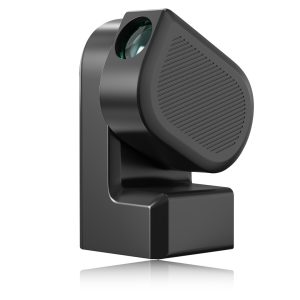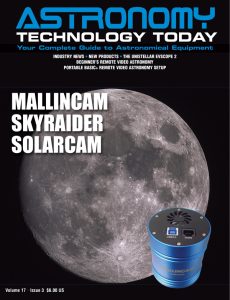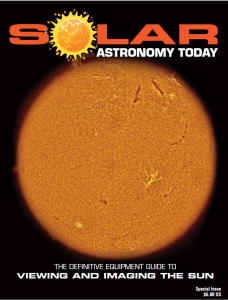The ZWO Seestar S50 is the latest introduction into the category of all-in-one smart telescopes which have become popular recently due to their simplicity and ease of use.
 The ZWO Seestar S50 integrates a telescope, electric focuser, astrophotography camera, ASIAIR intelligent controller, alt-az mount and filter-switching into a single device weighing just under seven pounds. It offers built in wi-fii and bluetooth and, when paired with the accompanying mobile app, it provides the ability to observe and photograph the Moon, galaxies, nebulas, and more.
The ZWO Seestar S50 integrates a telescope, electric focuser, astrophotography camera, ASIAIR intelligent controller, alt-az mount and filter-switching into a single device weighing just under seven pounds. It offers built in wi-fii and bluetooth and, when paired with the accompanying mobile app, it provides the ability to observe and photograph the Moon, galaxies, nebulas, and more.
The Seestar S50 utilizes a professional grade apochromatic triplet lens design to provide beautiful and crisp images and excellent control of chromatic aberration. A high-quality lens coating further helps to reduce light loss. It is powered by the Sony 2.1 Megapixel IMX462 STARVIS CMOS sensor.
The ZWO Seestar S50 feature low power consumption, which allows for an extended battery life. It is designed to operate for up to six hours per charge and can be recharged with a power bank while in use.
The built-in sensors to help in tripod leveling. These sensors and the built-in star maps, when used with your smart device’s GPS sensor, will also automatically complete the system’s self-calibration and alignment process. To view or image a specific object, simply choose an object from the star map and the Seestar will automatically align and start tracking and will keep the object centered in your field of view.
The ZWO Seestar S50 also offers live stacking so it should also perform well for those that practice EEA.
The ZWO Seestar S50 specifications include:
– Focal Ratio: f/4.9
– Telescope Aperture: 50mm (1.97″)
– Telescope Mount Type: Alt-Azimuth
– Number of Refractor Elements: 3 (Triplet)
– Focal Length (mm): 250
– Resolution: 1920 x 1080
– Telescope OTA Weight (lb.): 6.6
– Connectivity: WiFi and Bluetooth
– Operating Temperature: 0°C ~ 40°C
– Smart Telescope Sensor: Sony IMX462
You can learn more about the ZWO Seestar S50 here.

 And to make it easier for you to get the most extensive news, articles and reviews that are only available in the magazine pages of Astronomy Technology Today, we are offering a 1-year magazine subscription for only $6! Or, for an even better deal, we are offering 2 years for only $9. Click here to get these deals which only will be available for a very limited time. You can also check out a free sample issue here.
And to make it easier for you to get the most extensive news, articles and reviews that are only available in the magazine pages of Astronomy Technology Today, we are offering a 1-year magazine subscription for only $6! Or, for an even better deal, we are offering 2 years for only $9. Click here to get these deals which only will be available for a very limited time. You can also check out a free sample issue here.
The Sun is more active than it’s been in years and if that’s not enough, we have the Annular Solar Eclipse on October 14, 2023 and the Total Solar Eclipse on April 8, 2024! If you’d like to learn more about the technology behind solar observing, solar imaging and more, you can check out our free publication, “The Definitive Guide to Viewing and Imaging the Sun”. You don’t have to sign up or provide any information, simply click here and enjoy reading!

